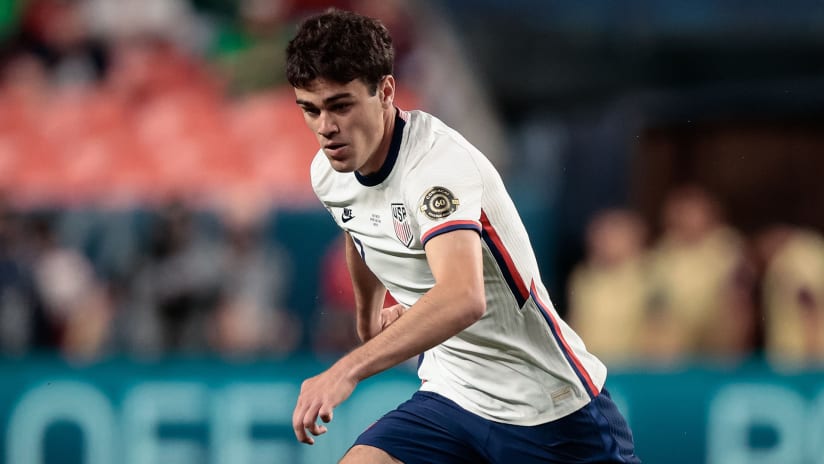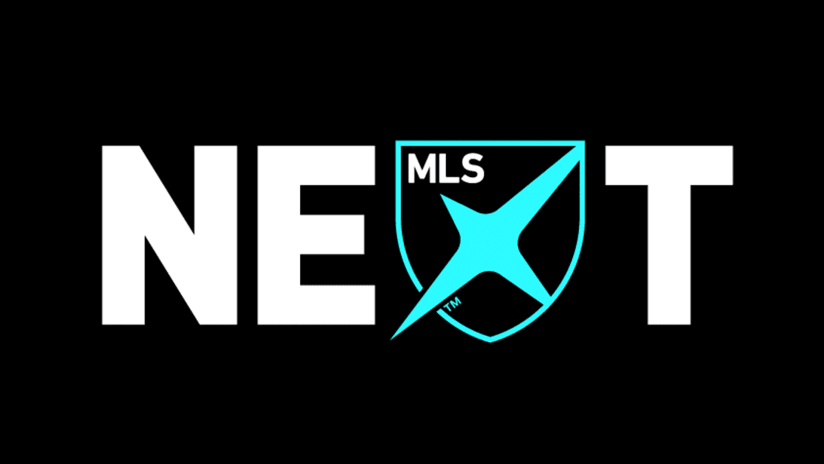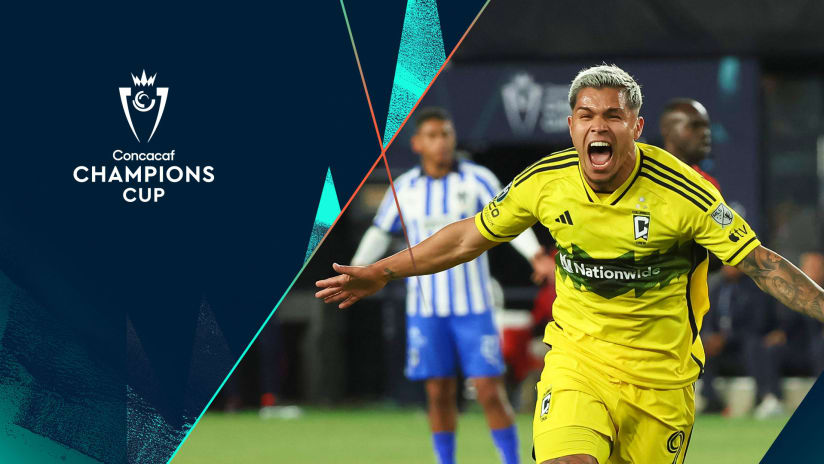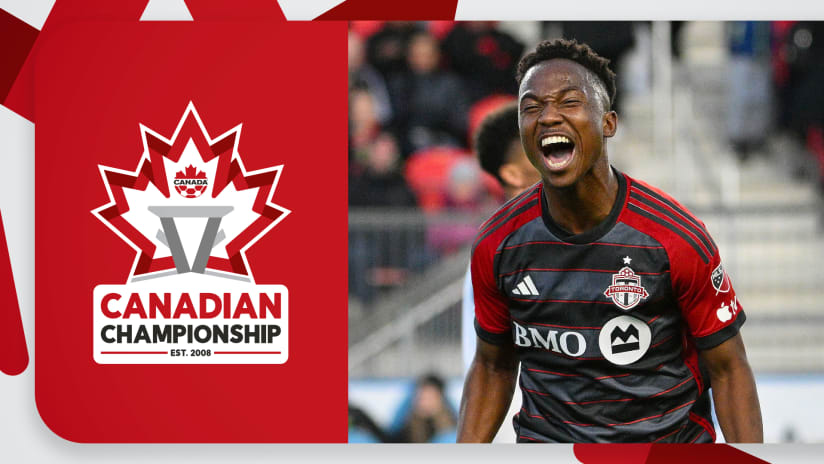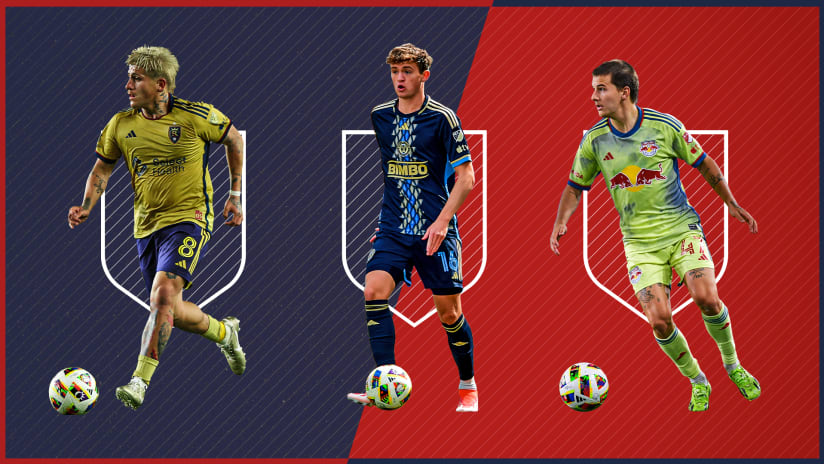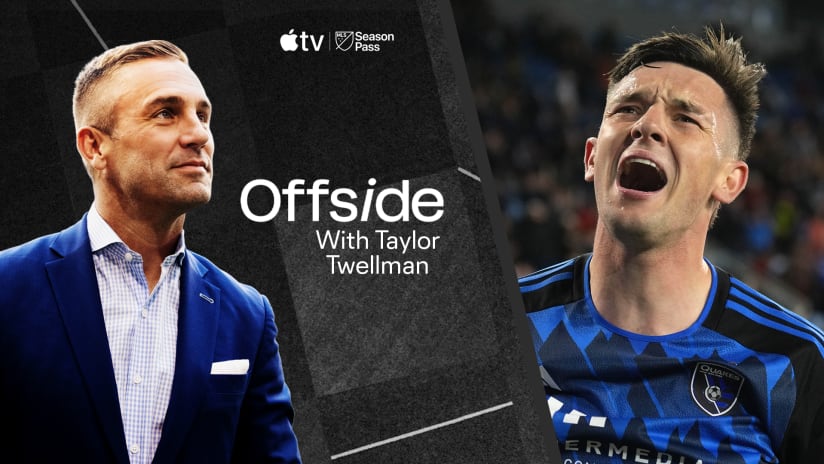The academy initiative in MLS has been less of a revolution and more of an evolution. As MLS clubs acquired enough institutional knowledge and hands-on knowhow, the ability to take raw materials (local youth players) and turn them into finished items (MLS first-teamers) has become more of a repeatable, streamlined process.
It is still not perfect, this initiative that began in earnest back in 2007 and has now hit another gear with the unveiling of MLS Next, but the returns at this point are unquestionable. Alphonso Davies, the best young left back in the world and now a Champions League winner, and Tyler Adams, one of the top defensive midfielders in the Bundesliga as well as the scorer of the most important club goal by any US player ever (sorry Jay DeMerit), entered the Vancouver Whitecaps and New York Red Bulls academy, respectively, as tweens. They are now on top of the soccer world, or close to it. They did not get there by accident.
And they are not alone. Weston McKennie (FC Dallas) and Gio Reyna (NYCFC) never played in MLS, but they are products of MLS academies; one just made a $20+ million move to Juventus and the other is a 17-year-old starter at Borussia Dortmund. Zack Steffen took a roundabout path from the Philadelphia Union academy to Germany, back to MLS, back to Germany and now, perhaps, to the No. 2 spot on the 'keeper depth chart at Manchester City. Erik Palmer-Brown (Sporting KC) is also on the books at City, though he is part of their loan army. Same for Matt Miazga (RBNY) with Chelsea, and Chris Richards (FC Dallas) may be the Bayern Munich version of the same. Chris Durkin (D.C. United) was just sold to a Belgian club, and is a regular starter in one of the most heavily scouted leagues in the world. Reggie Cannon, off to Boavista in Portugal before a likely final destination of Lille in Ligue 1, is on a similar journey.
The pipeline, in other words, is open. MLS Commissioner Don Garber said a couple of years ago MLS was evolving into a selling league, and the fundamental building block of all selling leagues (and really, every league is a selling league and all but like five teams in the entire world are selling teams) is academy infrastructure. Yes, there will always be the chance to groom and sell on the next Miguel Almiron, and it's encouraging to see MLS getting into that market. But that's a different sort of proposition that requires a risky, up-front investment on talent that might not actually come good.
Building players from scratch and putting them into the biggest clubs in the biggest leagues in Europe, though? Even if, as with Miazga, they're not quite good enough for Chelsea, RBNY still made $5 million on that move — and had a Homegrown in the heart of the defense as they won their second Supporters' Shield. The same infrastructure that builds a Miazga also builds a Sean Davis, an Alex Muyl, a Kyle Duncan — and, of course, a Tyler Adams. Having that assembly line to churn out talent is the global business of soccer.
For the players, though, this isn't just about the business side. This is very much about the dream of going to the biggest clubs in the biggest leagues in Europe. Scoring a goal that puts you into the Champions League semifinals, or locking up Kylian Mbappe and hoisting the trophy alongside Robert Lewandowski, Thomas Muller and Thiago.
MLS products have done that, now. It's no longer theoretical that these teams can produce players capable of hitting the highest heights in clubs soccer. It is fact.
And here's seven players who — if you'll excuse me for appropriating some branding — are set up to be next:
Brenden Aaronson
- Team: Philadelphia Union
- Position: Attacking midfielder
- Age: 19
Strengths:Aaronson is pretty obviously made for the modern game, as he has an engine that just does not quit. The 19-year-old is a pressing weapon who is constantly compressing the field for his opponents and stretching the field for his own side. He combines that engine with moments of breathtaking dynamism — everything from through-balls to golazos to clever feints in traffic when receiving the ball.
Aaronson is particularly good at that last part. He usually changes his body shape just before receiving, essentially making his first "move" before he's even in possession of the ball, which is why he so frequently sheds the first defender with ease:
Goodbye, Wil Trapp.
Needs to work on: Sometimes Aaronson's engine revs too much, to the point where he runs himself out of position. This happens all the time in build-up, particularly when he's playing as a No. 10 (as he has been this year) as opposed to when he's on the wing:
The Union are doing well to have him play through this phase, because there's no teacher like the game and there's nothing as important as reps. As it is, though, Aaronson's in the bottom 15% of all attacking midfielders for usage rate (which is a fancy way of saying he doesn't get on the ball enough). Head coach Jim Curtin has said point blank Aaronson needs to be a "volume" player, and it's likely whoever brings him to Europe feels the same way.
A player as talented as Aaronson shouldn't just be influencing the game; he should be dictating it. If he's going to play in central midfield either as a No. 10 or a free 8, he'll have to learn how to do so.
What the future holds: A winter transfer to a pressing team. There has been, and still is, Bundesliga interest, though the latest hot rumors are from a team in the other Bundesliga.
Aaronson recently changed agents and is now with the group that just put McKennie in Turin, and Philly are more vocal about their desire to sell their homegrown talents than any other team in MLS, so the writing for a big move is on the wall.
Ricardo Pepi
- Team: FC Dallas
- Position: Center forward
- Age: 17
Strengths:Pepi is a goalscorer who does the types of things you want to see from any young No. 9. He makes the fundamentally sound runs he should, happily battles center backs and is awake to opportunities in the box. Plus, he just strikes the ball well, and with power, even when there's not much time to have a hit:
He was patient and strong (notice him holding off the defender with his left arm) there, and even though he's just 17, he's 6-foot-1, 170 pounds. He has grown man strength.
The better part of that clip, though, is his balance. Pepi has that Chris Wondolowski-esque ability to not get wrong-footed by chances like the one above, and the ball comes off his foot so damn clean almost every time.
Needs to work on: His presence in build-up play is rudimentary, as he doesn't do the sort of hold-up work that made Jozy Altidore, Josh Sargent or Daryl Dike immediately stand out. Pepi might end up being a better natural goalscorer than any of those guys (I wouldn't bet against it, to be honest), but few forwards in the modern game are allowed to be just goalscorers. Pepi needs to show a bit more of a playmaker's instinct and an understanding of when and where to be an outlet valve for Dallas in possession.
The other thing to work on is a goalscorer's master's thesis: How to set up and sucker in defenders with your off-the-ball work.
What the future holds: Pepi's playing as a second forward or even a bit of a winger this year, which is fine. Next year I'd expect him to compete for real minutes as the No. 9, and to outright win the starting job for the US Under-20s.
A sterling performance on that particular stage opens doors to the biggest clubs in the world.
James Sands
- Team: NYCFC
- Position: Defensive midfielder
- Age: 20
Strengths: You probably don't notice Sands very much. For a young player who won a starting job at 18 years old in a big market, and who boasts a USYNT pedigree, he's generated almost zero buzz. That's because the plays Sands makes are ones like these:
It looks like a nothing play and it registers as a nothing at all in either the boxscore or in events-based analytics, but his read and footwork are exceptional. He covers the easy outlet, peels off at the exact right time to get pressure to Darlington Nagbe, and forces him into a square ball. Sands clearly had done his homework about Nagbe's strengths (magnificent dribbler; incredible agility; impossible to knock off the ball) and weaknesses (always chooses the conservative pass; no left foot), and applied them in a split second, killing a potential counterattack.
There is a reason Dome Torrent fell in love with the kid last year and there is a reason Ronny Deila has kept Sands in the lineup this year: he makes no mistakes, and he murders opposing transition opportunities. Given how much of the game is actually played in those transition moments, that's a big deal.
Obsessive fans have even made video compilations of the kid nailing his off-ball rotations. It's boring to watch, but it's important.
Needs to work on: Sands is not a modern d-mid. He is an old-fashioned destroyer, maybe even a stopper in a lot of ways. For all he brings to the table defensively, he takes a ton off of it in possession and attack with his risk-averse approach to passing the damn ball.
Sands only rarely breaks lines with his passing, though he can do it. If he starts doing it more often, he is probably second only to Adams in terms of upside for homegrown d-mids.
What the future holds: I have heard zero rumors or whispers about Sands potentially moving away from NYCFC, and if he does so it's a fair bet that it won't be to the mothership in Manchester. Even if Sands does start hitting more and more meaningful passes, I don't think he'll be a Manchester City-caliber No. 6.
But I do think he can play for, say, a Borussia Monchengladbach (who have already bought his young teammate, Joe Scally) or a Lille. And if Dome does well with Flamengo, then pivots that into a job somewhere in La Liga, don't be shocked if he brings Sands across the pond.
The kid's got to start hitting those passes, though. If he doesn't, he won't play a second for Gregg Berhalter and the USMNT, and without that, there's almost no path to the top of the game in Europe.
Moses Nyeman
- Team: D.C. United
- Position: Center midfielder
- Age: 16
Strengths:Nyeman is 5-foot-5, 135 pounds. Yet every single time he goes into a 50/50 duel, I expect him to come out with the ball. There is a phrase the guys on the Scuffed podcast use: "can he go into the cage?" What they mean is "can you go fight another professional soccer player for possession of the ball, win that battle, and do something good with it?"
Nyeman does that. He goes into the cage and he takes the ball away from grown men. Adams, at 16, didn't do it as well as Nyeman does. Paxton Pomykal — who became elite at this by age 18 — didn't do it at all when he was 16.
Here's a bit about Nyeman's journey, for both club and country:
His building blocks as a player are that he's quick, strong, great at winning the ball and S-tier at keeping it.
Needs to work on: There simply aren't very many top-level central midfielders who are as tiny as Nyeman (though to be fair he's still growing). The ones who are that small are generational talents on a global level, and the odds of Nyeman becoming that are long — wonderful building blocks or not.
The other thing Nyeman has to do is become more of a killer in the final third. There are moments where it looks like he can just walk the ball into the net, but there might be a little bit too much of Nagbe's "keep possession at all costs" mentality to him. In this game of ours you have to be willing to take risks, and understand the trade-off of when a low-percentage pass is worth it.
I want Nyeman, who is one of the most skilled players in his age group, attempting that pass. Too often, Nyeman doesn't want to be the one to do it. That has to change.
Julian Araujo
- Team: LA Galaxy
- Position: Right back
- Age:19
Strengths:Araujo lives for those battles in the cage, and he wants to bring whoever he's playing against in there with him because he knows he's going to win. He basically said as much on Extratime two weeks ago ahead of the latest El Trafico, and on the pitch, it was Araujo outplaying his opposite number (again) and it was Araujo baiting Mark-Anthony Kaye into a game-changing red card. He is relentless, he is confident, and he is a plus athlete in terms of his quickness, agility and straight-line speed.
Plus he can ball:
This was last year when he got a run of games at right back, and that play followed by that pass is just... he makes it look easy. It's not easy.
This summer Guillermo Barros Schelotto has moved him to what is essentially a right midfield position in a 4-2-3-1 in a bid to shore up the entire team's defense, and it's worked. Araujo is not a high-level attacking talent, but he's smart about when to get forward, doesn't give it away cheaply, and can provide the final ball.
There's a reason the suitors for his signature two years ago were the Galaxy and Liverpool.
Needs to work on: He's not a high-level attacking talent despite having good feet and the ability to hit that final ball. If Araujo's going to move to the likes of Liverpool eventually... I mean, just look at how reliant Jurgen Klopp's team is on their fullbacks to unlock the game. Look at what Davies does for Bayern, or how crucial Adams often is when he plays at fullback or wingback for RB Leipzig.
Araujo is a throwback in that he's a defender first, even when playing at right midfield. In the youth ranks he was actually a center back, so those are his instincts.
I have few doubts he'll be a high-level defensive fullback for the next dozen years or so (once Schelotto moves him back there full time), but his ceiling is going to be determined by how dynamic he can become pushing forward.
What the future holds: I will be shocked if he's not the starting right back for both the Galaxy and the US U-20s next year, and he's a solid bet to be wearing the captain's armband for the U-20s to boot.
He's already on the radars of the biggest clubs in Europe. If he keeps playing for the next 18 months the way he's played for the past two, there will be a move.
Cade Cowell
- Team: San Jose Earthquakes
- Position: Winger
- Age: 16
Strengths:Cowell seems to be the realization of the old "imagine if our best athletes played soccer..." daydream. Just watch the kid move and you could see him as an undersized point guard, or a power-hitting middle infielder, or a Darren Sproles-type running back/return specialist.
He doesn't just have pace: he has a change-of-pace that, based upon limited sample size, seems to be devastating in the open field:
Cowell didn't really know what he was doing there — he wasn't setting Keegan Rosenberry up the way, say, Cristian Pavon sets up fullbacks when they're isolated on him. But Cowell, at a full sprint, still knew enough to get his head up and look for help, and still kept close control enough to ride any challenge, and still had the strength to push past Rosenberry in the first place, and still had enough burst to create separation a second time after he'd slowed down.
He can also create separation when the game's more compact, as he did on his only goal (so far) with the Quakes.
Defensively he digs in and competes. You won't play for Matias Almeyda if you don't.
Needs to work on: I wasn't going to include Cowell on this list because I still see him mostly as a straight-line runner without a ton of technique. He reminds me of what Jordan Morris was like at 21 coming out of college.
Of course, we can all see what Jordan Morris has become at 25 after half-a-decade as a pro, and Cowell should work on the same things. Leverage that speed by finding space early off the ball and being decisive with it, and do more to become two-footed. Learn when to use that off-ball threat in order to push an opposing defense back, which opens up space underneath for teammates. Don't just compete defensively; win the ball. Work on receiving the ball in traffic with either foot. Use that change-of-pace as a weapon, not just a get-out-of-jail card.
What the future holds: If Cowell can go on the same journey from age 16-to-21 that Morris went on from 21-to-26, then, like Morris, he will have his share of Bundesliga offers and USMNT camps and caps. Or he could choose to be, like Morris, a hometown hero. And for what it's worth, there is nothing wrong with that: The best player in USMNT history spent the bulk of his career in MLS, and the best center back in USMNT history spent literally all of his career in MLS.
Either way, Morris's development has been exceptional. It's up to Cowell and the Quakes to make sure that it isn't actually an exception, though: it's a blueprint.
George Bello
- Team: Atlanta United
- Position: Left back
- Age: 18
Strengths:Bello is a modern, incredibly dynamic attacking fullback. He showed it two years ago when he scored his first career goal as a 16-year-old, and he's shown it repeatedly in age-group play, and he's even shown it from time-to-time during this miserable year for Atlanta. Against Nashville a few weeks ago he was particularly good on both sides of the ball:
He gets upfield and into the attack with ease, and often makes good decisions once he's there. He has the 1v1 ability to eliminate defenders off the dribble, and has that rare gift of seeming to see the game unfold in slow motion when picking the final ball. The kid is definitely at his happiest and most natural when flying forward and splitting open a scrambling defense.
Two years ago, before he was (mostly) sidelined by injuries, he was considered the single best US prospect at any position, of any age — better than Reyna.
Needs to work on: Staying healthy for one, but take a look at this compilation:
In the first clip, he just has no idea where he's supposed to be and doesn't seem to know he's actually a defender. It's almost comedic.
In the second clip, his reaction is slow and he gets very, very lucky that it's not 1-0 on that play. At the highest levels, it likely is.
In the third clip, his reaction is slightly better (still not great) but what really matters is that his recovery speed is elite, which means he can run down the play and put out the fire.
In the fourth clip, he's awake to the danger, his reaction is decent (though his body shape is poor) and his recovery is excellent.
Players improve with reps. Bello is improving with reps. If you coach them, and you give them tape, and you give them feedback, this is what happens. We saw it with Cannon three years ago, we've seen it with Araujo year-over-year, and it seems like we're seeing it with Bello game-over-game.
What the future holds: Bello has the tools to be in the same types of games that Davies and Adams played in last month. Whether or not he gets there depends upon whether or not he can become not just a responsible defender, but if he can become an influential, game-changing one.
A few more names to consider...
Paxton Pomykal would've been No. 1 on this list if he was healthy, but he's now had four surgeries in four years and it's impossible to ignore durability in player assessment. It's worth noting ESPN reported last year AC Milan were monitoring him, and it's also worth noting Pomykal recently switched agencies and is now with the guys that just helped put McKennie into Juve's squad.
If he comes back and finally gets, and stays, healthy, I have zero doubt he will end up at the likes of a Milan or a Dortmund. But that health issue is now the biggest "if" for Pomykal.
I was never all that high on Gianluca Busio as a No. 10, but he's largely been very good across a few games as a No. 6 over the past month. He's quick, his reads have been surprisingly crisp and his distribution is a legitimate weapon. He doesn't win enough duels yet — which has cost Sporting some goals — but perhaps that will come with time.
Either way he seems destined for Serie A, but how well he does defensively will determine how well he does when he gets there.
Mark McKenzie is a little bit older than any of the guys mentioned, and is drawing high-level European interest for a reason. His ability to spread the field or hit third-line passes with either foot makes him stand out, and he checks all the boxes you'd want physically from a top center back. Nonetheless he still kind of disappears from games and ends up playing too much emergency defense, and he's too often too shy to take space on the ball. Both in attack and defense his reads can be a touch slow.
Can he be really, really good? Yes, I think so. But I'm not sure I see a "plays real minutes for a Champions League knockout round team"-type talent in there.



